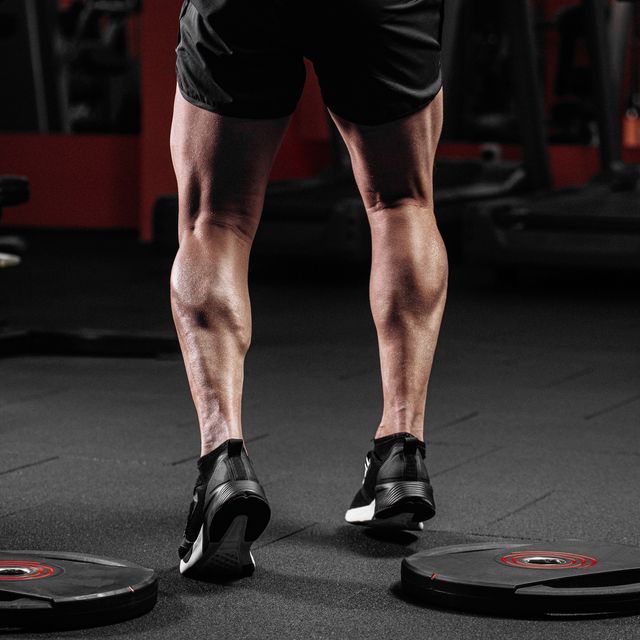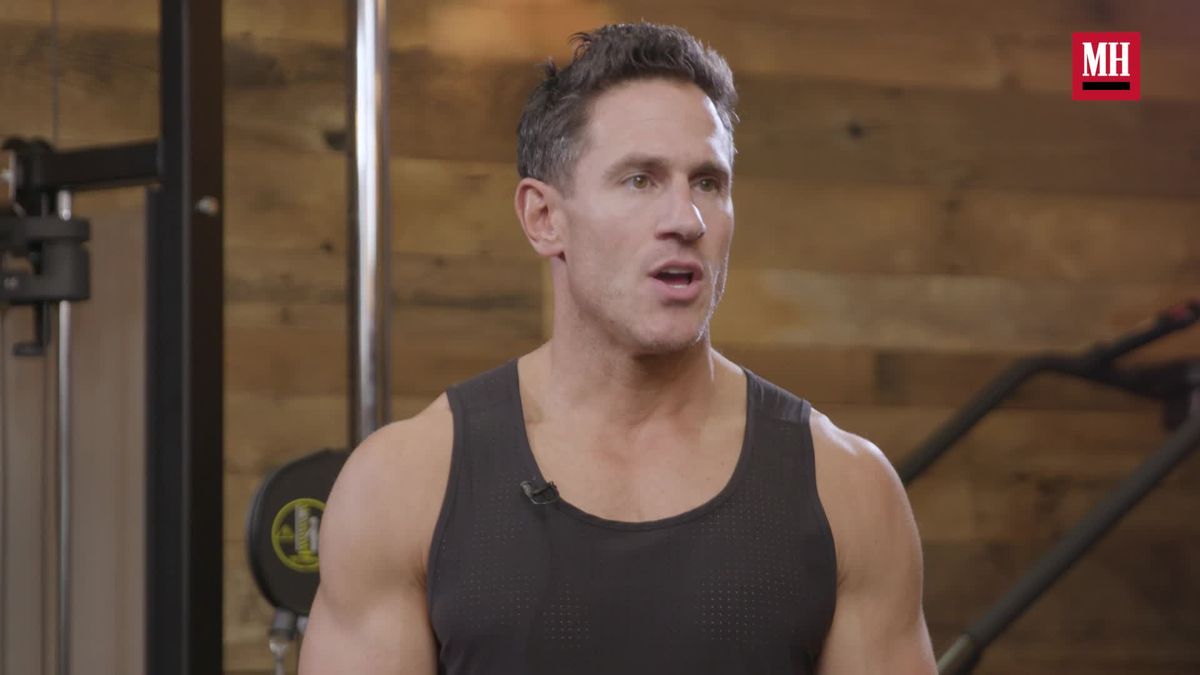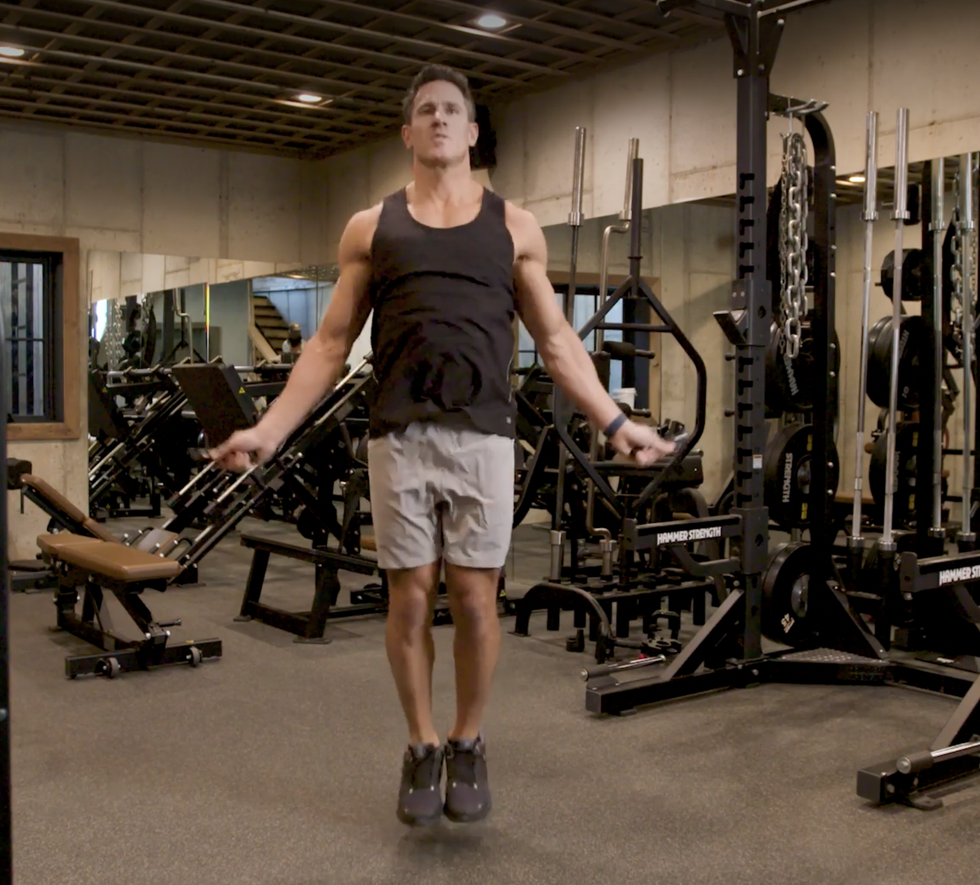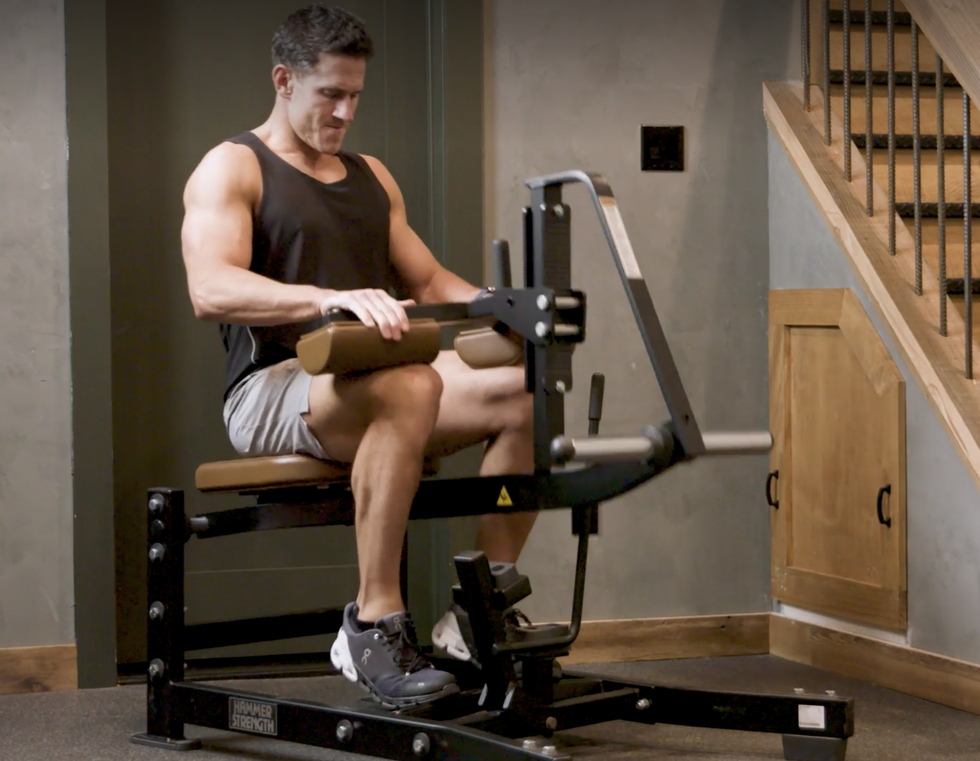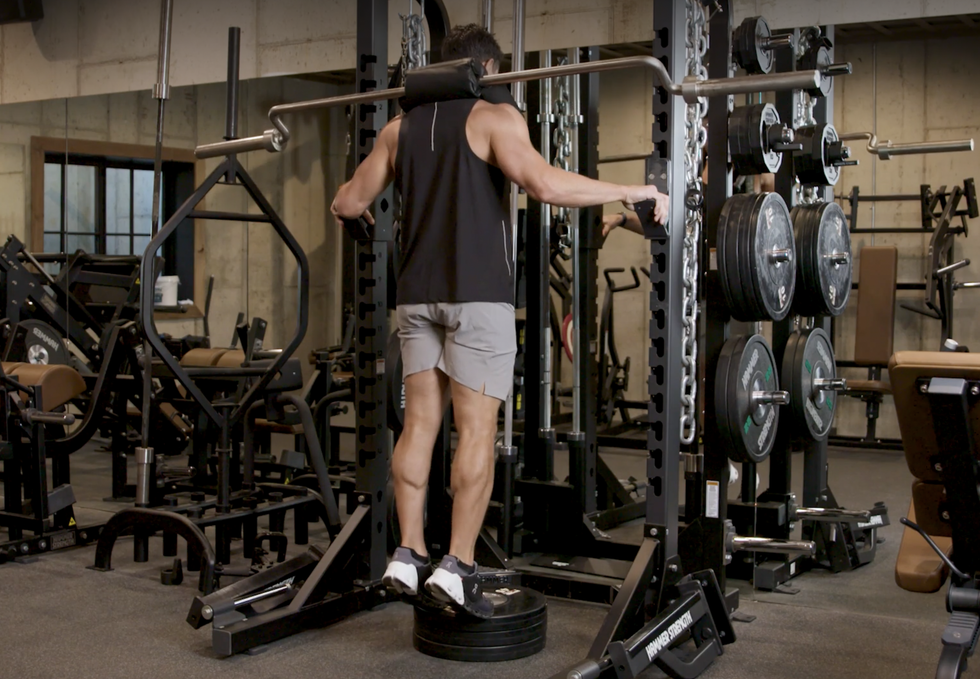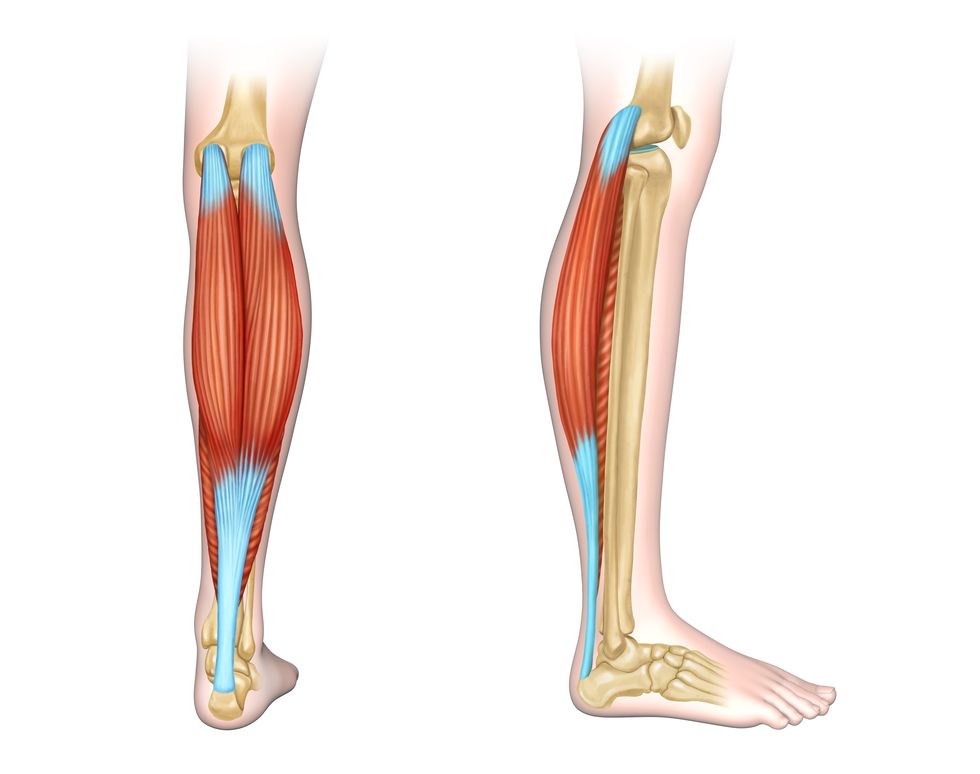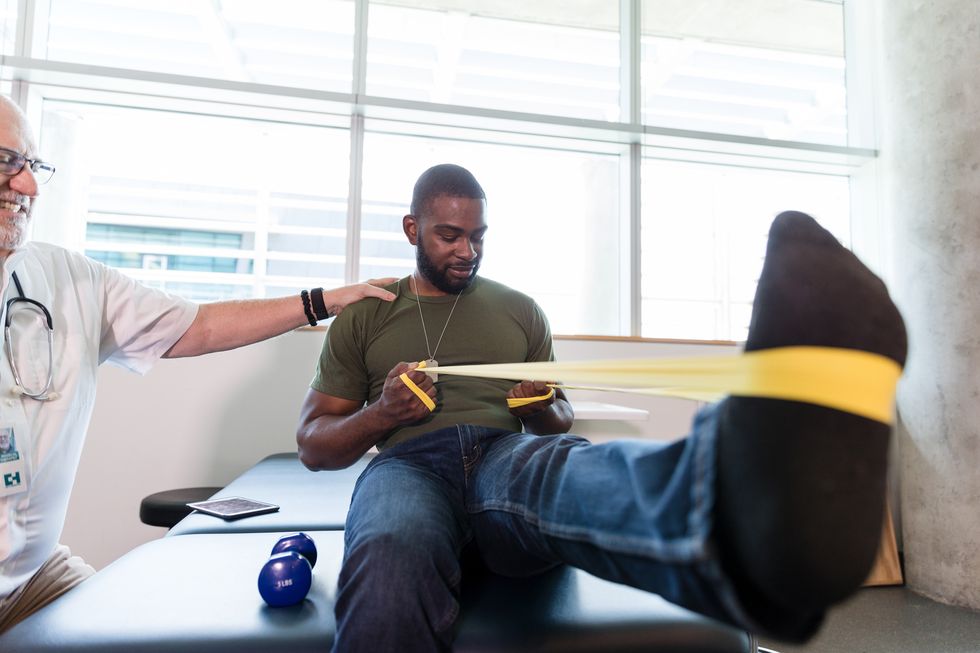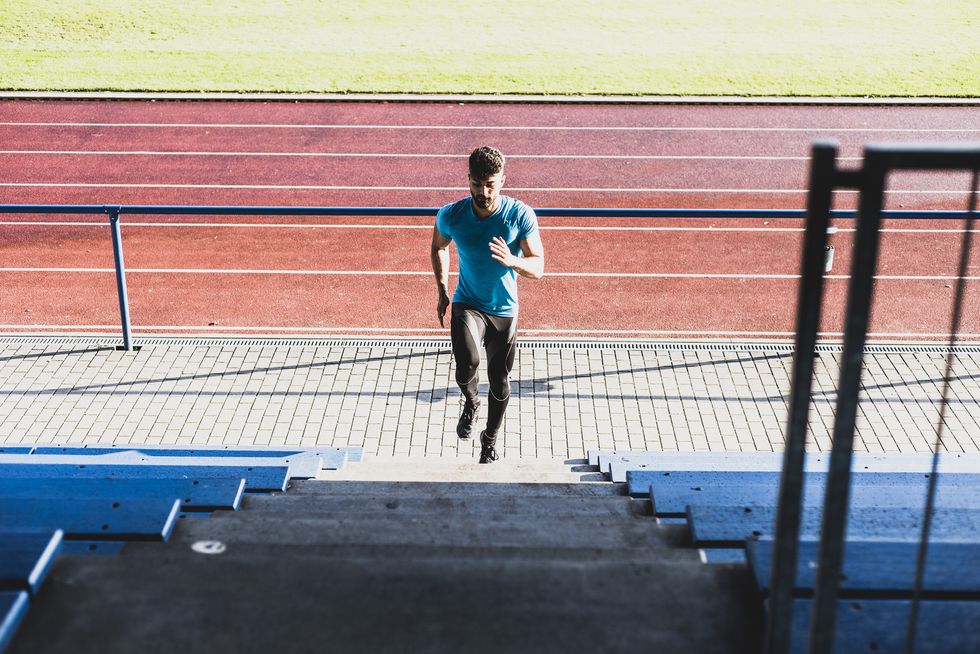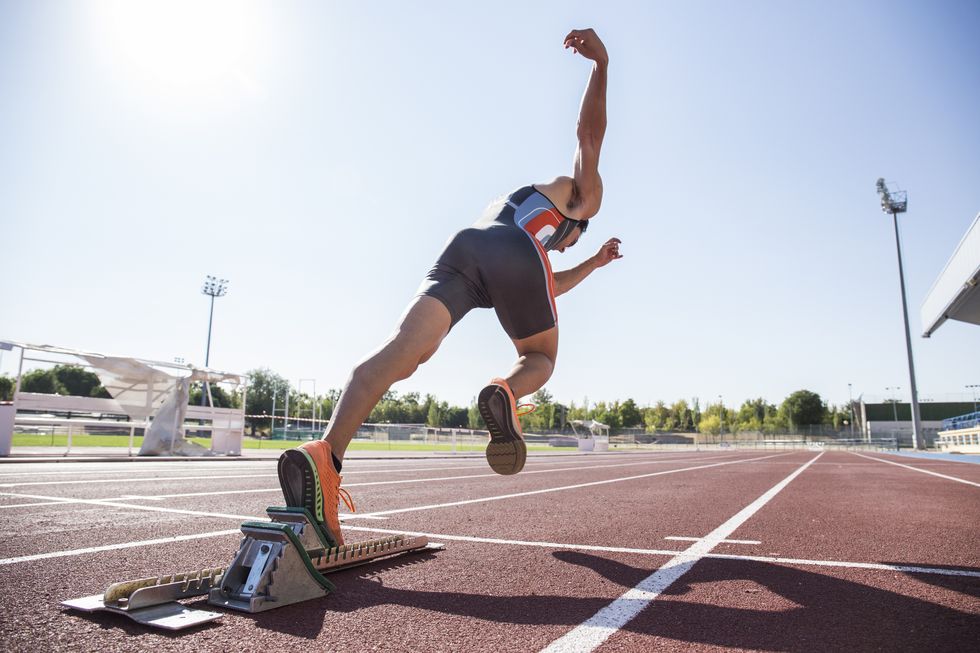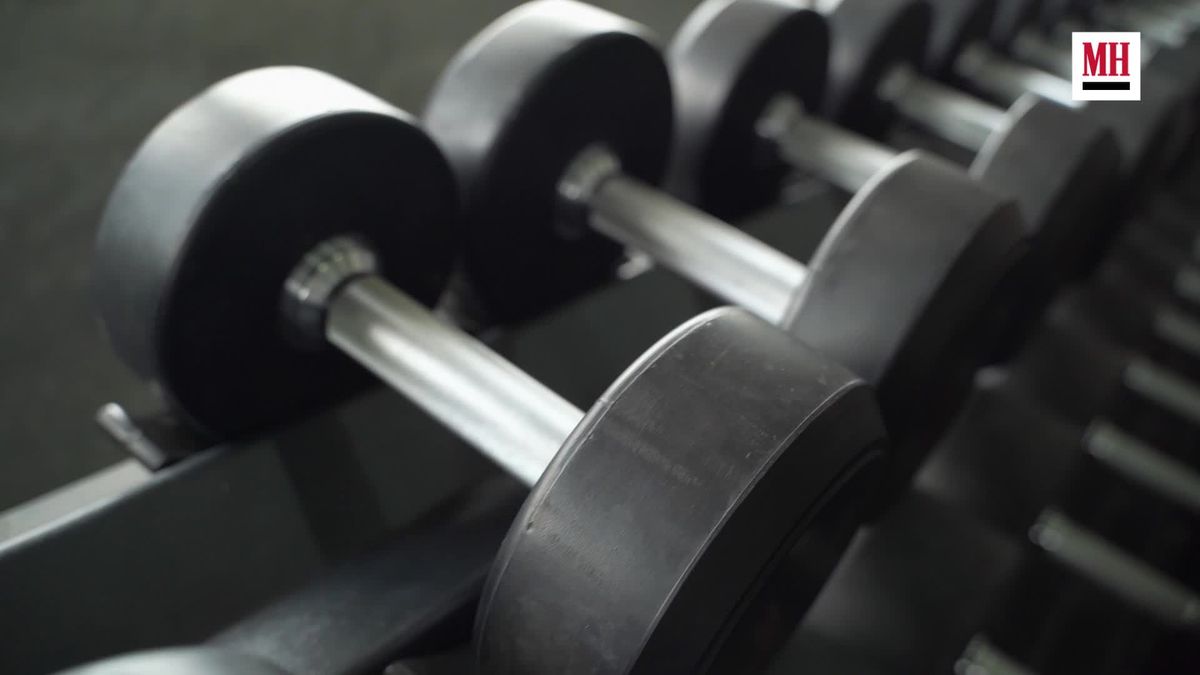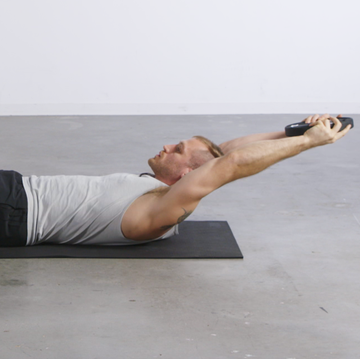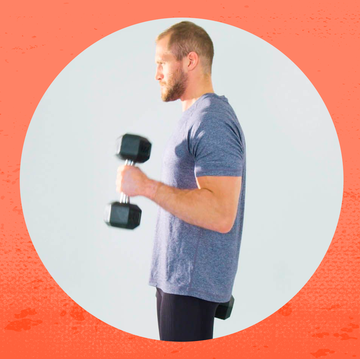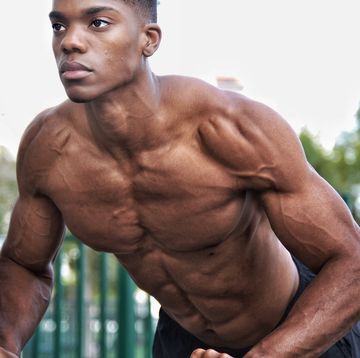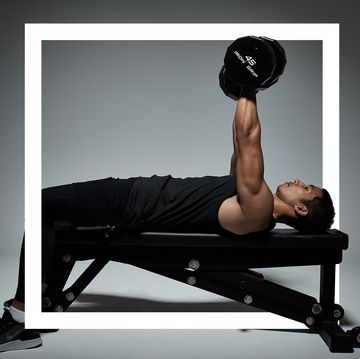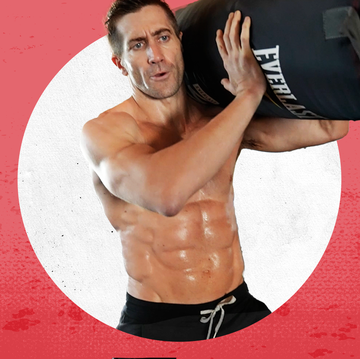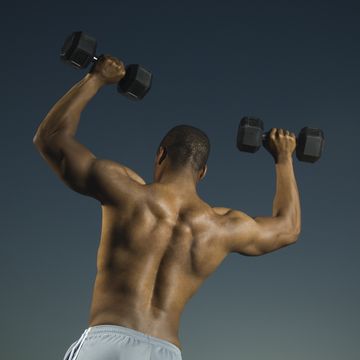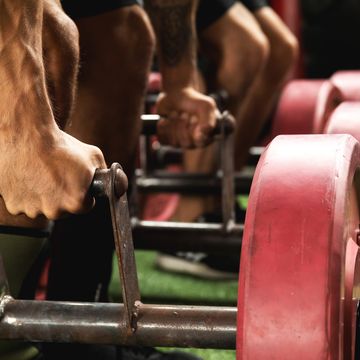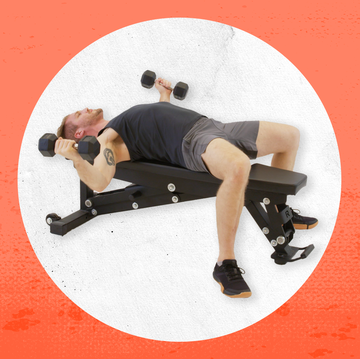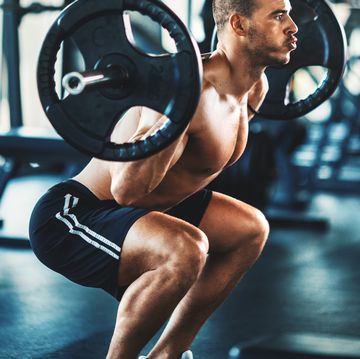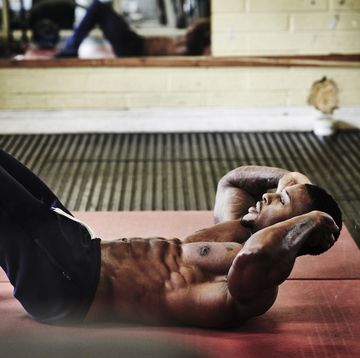THE KEY TO achieving a perfectly symmetrical physique and peak performance can come down to giving focused training attention to body parts most people neglect. There's one spot that is more typically overlooked (and improperly trained) than others: the calf muscles. If you have aspirations of a well-shaped lower half—and even if you want to boost your athleticism and resilience—it's time to get reacquainted with calf training.
But there are misconceptions about training your calf muscles. A dozen sets of squats won’t give you the stimulus you're looking for on leg day if you're not giving your calves any focused attention. Similarly, you won't make much progress doing endless rounds of bodyweight calf raises; like other muscle groups, you won't get very far without challenging yourself with a load.
Training your calf muscles—which are comprised of the gastrocnemius (the muscle that flexes the knee and foot) and the soleus (attaches the knee and heel and responsible for standing and walking)—isn’t just for showing off your lower half in shorts or for other vanity-driven purposes. Calf training can be important for improving ankle mobility to help develop more lower-body fluidity and explosiveness. This is essential for running, jumping—everything you need to do during sports. And best of all, you can squeeze calf training into your routine more often than other muscle groups. No more excuses. It's time to give your calf muscles the attention they need to grow.
Calves take a lot of time and effort to strengthen and build. There's no getting around it. But there is a way to build stronger calves. Let's break it down for you right now.
Must-Do Exercises for Your Calf Muscles
Standing Calf Raise
Why: This classic exercise is the go-to for guys who want to build their calf muscle—and for good reason. You'll be able to work the muscles through a full range of motion, and you don't need a specialized machine to do it.How to Do It:
- Grab a small step or stack weight plates to elevate your heels. Situate it about four to five inches back from the rack.
- Stabilize the step by placing a heavy dumbbell or kettlebell in front of it. This will prevent it from sliding.
- Situate the safety bars so they are a little lower than your shoulders when you're standing up on the step.
- For best results, take off your shoes before you begin the movement. Some stiffer shoes, like high tops, won't allow for proper range of motion you need to properly execute this move.
- Bring your body underneath the bar. Think about pulling your elbows down and back in line with your torso to tighten up the upper body. The bar should situate right on your upper back—not your neck.
- From here, lean the bar into the rack. This eliminates the challenge of balance, allowing you to really load up the weight once you're ready for it.
- Slowly lower your heels down to the ground to where you feel a good stretch through your calves. Hold that stretch for two seconds or so before pushing through your toes to power upward.
- As you drive up, think about continuously driving the bar into the rack. Squeeze at the top, when your ankles are fully extended.
Sets and Reps: 3 to 4 sets of 20 to 25 reps
MH fitness director Ebenezer Samuel, C.S.C.S., and celebrity trainer Don Saladino share their four best calf exercises that you should incorporate into your routine as often as possible. “If you focus on these four, we believe you're going to achieve well-rounded calves, but also most importantly, functionality," Samuel says. "You’ll be more resilient in your lower body… and you're able to live a long healthy, and functional life.”
Single-Leg Calf Raise on Leg Press
Why: This exercise is ideal for athletes, especially basketball players who may have some calf mobility issues. The great thing about incorporating unilateral work like this into your training routine is that you’ll be able at times to uncover some imbalances you may not have previously been aware of, and be able to begin working on making improvements sooner than later. For the single-legs, focus on a full range of motion throughout the entire exercise—this requires no cheating. Opt for lighter weight to help maintain a greater range of motion —you’ll be quickly humbled by the difficulty of this exercise. Try for a two-second hold at both the top and bottom of the movement.
How to Do It:
- Sit in the leg press machine with good posture (bracing your core), with one leg extended and the balls of your foot on the sled. You shouldn't overload the weight to start, especially as you're finding the right position.
- Keeping your leg straight, extend your ankle to press the sled up (plantarflexion). Pause and squeeze your calf at the top for one to two seconds.
- Slowly lower the weight back down to the absolute end of your range of motion in a dorsiflexed position, holding for one to two seconds.
Sets and Reps: 3 sets of 12 to 20 reps
Jump Rope
Why: You probably never saw this one coming, but not only does a little rope jumping hit your cardio, burn fat and help build explosive lower-body plyometric power—the repetitive movement is also helping grow your calves in the process. It’s an ideal exercise that you can throw in anytime: as a warmup or finisher, or even as a standalone cardio workout. A few sets of jumping rope can help you build aesthetically acceptable calves.
How to Do It:
- Grab a jump rope, holding the handles in each hand. Get into good posture by squeezing your shoulder blades, abs, and glutes, keeping your gaze directly in front of you for a neutral spine.
- Jump and swing the rope at the same time. You shouldn't be leaping into the air; hop off the ground, landing on the balls of your feet, then push right back off the floor into the next rep.
Sets and reps: 30 seconds on, 30 seconds off for 3 to 4 rounds
Seated Calf Raise
Why: Finally, we can begin to add some serious load to our calf training. The seated calf raise is unique from most calf exercises is that it’s one of the few in which you’re training from a bent-leg position—which will help target the soleus muscles more than other moves. You’re also able to play around with foot positioning a little more freely with this machine. Again, continue focusing on getting a full range of motion with each rep—a two-second hold on both top and bottom portions of the movement work best.
How to Do It:
- Sit in the machine, with the front of your feet on the apparatus.
- Extend your ankles (plantarflexion) and press your knees up into the pad to raise the machine. Aim to limit extraneous body movement. Squeeze your calves for one to two seconds at the top.
- Lower back down slowly to the absolute end of your range of motion at the bottom (dorsiflexion), holding for one to two seconds.
Sets and reps: 3 sets of 8 to 15 reps
Safety Squat Bar Squat Raise
Why: By using the safety bar while holding onto the squat rack for support, you're not only able to take the muscle through a full range of motion, it allows you to go heavy and hard. But even here, don’t overdo the weight for the sake of sacrificing range of motion.
How to Do It:
- Start by stacking up plates or a platform inside your weight rack.
- Stand on the plates/platform, then get in position with your safety bar—secure your neck through the pads, then squeeze your shoulders, abs, and glutes to take the bar off the rack. Once you have the bar on your back, grab the rack with both hands.
- Shift your position so your weight is in the balls of your feet and your heels are off the platform.
- Extend your ankles (plantarflexion) to raise up, pausing at the top for one to two seconds.
- Lower back down slowly to the absolute end of your range of motion at the bottom (dorsiflexion), holding for one to two seconds.
Sets and Reps: 3 sets of 10 to 15 reps
What Are Your Calf Muscles?
To some extent, you’re always training your calves when you train legs. When you look at your most popular leg moves (squats, lunges, deadlifts) it’s important to understand that they work from the ground up. In the same way you need your forearms to grip implements when you train pulling and pressing motions, you need assistance from your calves to create the base for your lower-body moves.
This means the most with regards to the musculature of the feet and the ankle complex. The ankle is made up of two joints, the talocrural joint and the subtalar joint. The talocrural joint is your upper ankle joint, driving both the flexing and extension of your foot. The subtalar joint lets you shift on the base of your feet toward the center or the outside. Both joints don’t just need strength in the surrounding muscles, but mobility, too.
The calf muscles have three main parts. The largest and outermost muscle is the gastrocnemius. When you think of the calves, this is the baseball-sized muscle. There are two heads to the muscle, the lateral head which sits on the outside of the lower leg and the medial head that sits on the inside of the leg. The two heads can both work together. The gastrocnemius oversees the pointing of your toes. Easy rule: When the heel is above the toes, and your muscle is being flexed, that’s the gastroc.
The soleus is the other muscle, and it has similar responsibilities, with one key difference. The gastroc attaches above the knee, and the soleus below the knee. So whenever the knee is bent, the soleus is doing the work. When the knee is straight, the gastroc is doing the heavy lifting.
How to Approach Calf Muscle Training
Because of the mobility of the ankle joint, foot positioning is a big key to how you’re training your calves. Small differences in positioning, from inversion to eversion or even just how you’re driving through the balls of your feet, will affect how you attack your calves.
To build three-dimensional calves, you need a multitude of approaches. That’s why hikers often have well-developed calves: They’re constantly working the concentric and eccentric contractions of those muscles from variable angles as they clamber over ledges, rocks and steps of different shapes and sizes. They’re also doing hundreds of reps at a time.
Varying rep schemes are also critical. Think of doing reps between 10 and 25, alternating between volume and strength days. That also means that you shouldn't be afraid to load up the weight on those strength days, either.
Calf training isn’t all muscle moves, either. Plyometric movements are how athletes set themselves apart in competition.
The force you can produce using your calves might be the difference in your strength, your power, and your overall athletic ability. It also means the best calf exercises and workouts won’t just be mere muscle-building moves.
Other Great Calf Muscle Exercises
Seated Band Pushes
These are great for working through progressive resistance and using resistance band.
Sit down with your legs straight out in front of you, one end of a looped resistance band around the balls of your feet, the other gripped in your hands, band taut. Bend at the ankle to press the resistance band away, pause and flex your calves, then return to the start position. That’s 1 rep; aim for 10 to 25 reps depending on the day.
Explosive Calf Step-up
Plyos are a great way to train the calves with respect to the ankle complex, and you’ll do that here. Set up with one foot on a box or bench. Explosively drive off that foot, jumping upwards off the bench; try to switch feet as you come down. Repeat on the other side. That’s 1 rep; aim for 10 to 25 reps depending on the day.
Static Neutral Hold
Isometrics are a great test for both your calves and your ankle mobility.
Stand with the balls of your feet on a block a few inches off the ground, holding onto something for support, but keeping the majority of your weight in the balls of your feet. Straighten your ankles as much as possible, flexing your calves. Hold for 30 to 60 seconds. Do 3 to 4 30-to-60-second sets.
Bunny Hop
This one’s all about plyometrics and explosion, and it’s as simple as it sounds.
Simply bend your knees and waist ever-so-slightly. Then jump up and down focusing on quick, small hops. Work to land and then take off quickly. Do reps continuously for 30 to 60 seconds. Do 3 to 4 sets.
Speed Ladder
The speed ladder is as much about speed and agility as it is your calves. You can work through a variety of speed ladder drills, everything from running through the ladder boxes one at a time with each foot to hopping through them, to more complicated drills like the Ickey shuffle. Do 3 to 4 sets of each.
Stadium Stairs
Yes, a stair run is one of the best way to train your calves, forcing you to flex and extend your foot constantly and repeatedly. Remember those hikers.
Don’t skip steps, though—this is different than running stairs to build up your cardio endurance. Aim to place a foot on each stair and run on the balls of your feet. Think of doing 20-second sets (depending on how many rows you have wherever you're able to run stairs). Aim for 3 to 4 sets to start.
Sprints
Much like stair runs, sprints will hone your calves by forcing you to repeatedly go through a full calf range of motion.
Think of running five to six 50 or 100-yard sprints to start. Aim to be as explosive as possible, and get plenty of rest between rounds.
Hill Runs
Hill runs won’t just smoke your calves; they’ll crush your hamstrings, glutes, and quads, too.
Think of doing 20-second dashes up the hill, then walking or jogging back down to start; repeat this 5 or 6 times.
